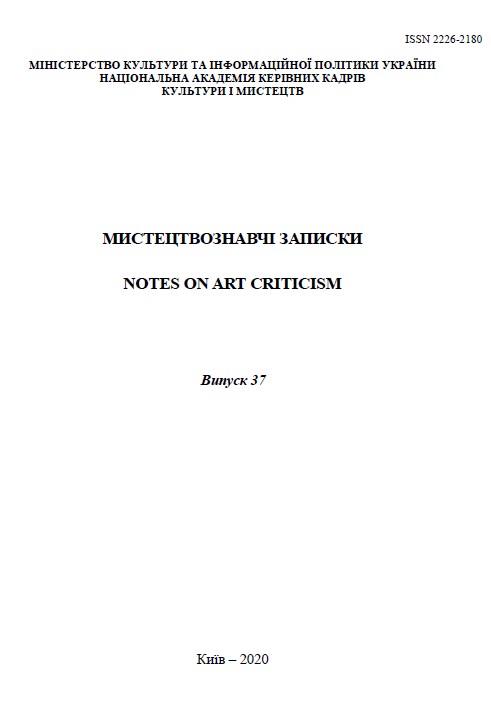СПЕЦИФІКА САЛЬСИ ЯК ХОРЕОГРАФІЧНОГО ФЕНОМЕНА В КОНТЕКСТІ СВІТОВОГО СОЦІОКУЛЬТУРНОГО ПРОСТОРУ
SPECIFICITY OF SALSA AS A CHOREOGRAPHIC PHENOMENON IN THE CONTEXT OF THE WORLD SOCIO-CULTURAL SPACE
Author(s): Roman GritsenyukSubject(s): Theatre, Dance, Performing Arts, Sociology of Culture, Sociology of Art
Published by: Національна академія керівних кадрів культури і мистецтв
Keywords: social dances; show dances; Salsa; choreographic phenomenon; stylistic features; performance technique;
Summary/Abstract: The purpose of the article is to identify the specifics of Salsa as a complex choreographic phenomenon in the context of the development of social and cultural space and the space of social art of the second half of the 20th and beginning of the 21st centuries; determine the stylistic and technical characteristics of the popular types of Salsa at the present stage of development of social and show dances. Methodology. To achieve the goal, the following scientific knowledge methods were used in the study: the historicism method, which helped to study the features of the formation and origin of Salsa; typological method - to identify factors influencing the formation, development, and transformation of Salsa and determine the features of this process; a method of comparative analysis aimed at identifying common and distinctive elements of popular modern Salsa styles; method of art history analysis - to determine the characteristic stylistic features of Salsa as social and show dance. Scientific novelty. An art study of Salsa as a complex cultural, artistic and social phenomenon was carried out; the process of formation and development of Salsa in historical retrospective is investigated; typical dance movements and Salsa dance figures are analyzed; based on art history analysis, the characteristic stylistic features of Colombian Salsa, Salsa Cassino, Salsa Los Angeles, Salsa Metro, Dominican Salsa, Salsa Freestyle, Salsa Rueda, etc. The practical and theoretical aspects of the activities of the international Salsa festivals are reviewed and characterized. Conclusions. Salsa as a multinational dance and music complex was formed as a result of complex transactions encoded in various styles of dance. Modern Salsa is the result of the development of traditional Latin American genres and their subsequent Americanization. Dance, which is very popular all over the world, is deprived, unlike many ballroom dances, of conditions of strict codification and standardization, open for improvisation, and therefore is constantly evolving, although it is no exception to perform Salsa according to a certain pattern or choreography.
Journal: Мистецтвознавчі записки
- Issue Year: 2020
- Issue No: 37
- Page Range: 63-67
- Page Count: 5
- Language: Ukrainian

